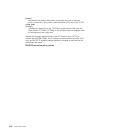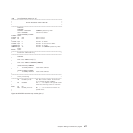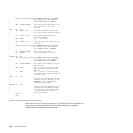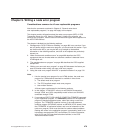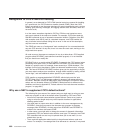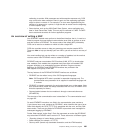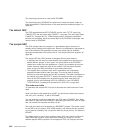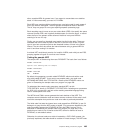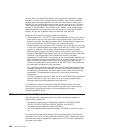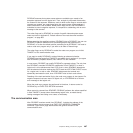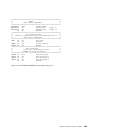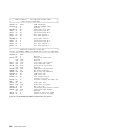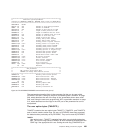will then locate the correct ESB within a selected NEB. The latter may be
permanently dedicated to the LU in error (a named NEB), or may be one taken
from the general pool.
The initial code then invokes the appropriate user logic for that error group. The
initial code also sets up pointers to the communication area, the NEB, and the ESB.
For details, see “Generating the sample node error program” on page 499.
The common routines in the NEP provide common services for your own logic.
They count and time stamp errors in the ESB, and test whether error thresholds
have been exceeded. They are not documented outside the sample listings. You
can generate a NEP without them if you prefer.
Your own code is inserted between the DFHSNEP TYPE=INITIAL and TYPE=FINAL
macros.
Note: If the user code you insert between the DFHSNEP macros contains EXEC
CICS commands, you must translate the commands, and enter the
translated code between the DFHSNEP macros.
Each section of user logic, intended to handle a particular group of error types, is
headed by a macro of the type:
DFHSNEP TYPE=ERRPROC,CODE=(ab,cd,...),GROUP=n
where X'ab', X'cd',... are the DFHZNAC internal error codes you want to process,
and n is the number of the error group, and therefore also of the corresponding
ESB, within a NEB, in the node error table. Successive DFHSNEP
TYPE=ERRPROC macros should use groups 1, 2, 3, and so on.
The DFHSNEP TYPE=ERRPROC macros serve several purposes. They:
v Inform the NEP generation how many error groups there are
v Show which error types are to be included in each group
v Introduce the code for each group.
Note that any one DFHZNAC error code should only figure in one error group, and
that any code not mentioned is simply ignored by the NEP. You follow each
DFHSNEP TYPE=ERRPROC macro with your own logic. This should begin with
standard code to save registers, or set up addressability, which is best copied from
sample NEP listings.
CICS provides some standard error processors to handle specific errors on two
different types of LU. These are for non-SNA 3270s (BSC 3270s attached to
CICS-VTAM), and for interactive SNA logical units like a 3767. More information is
given in “When an abnormal condition occurs” on page 486.
The code for non-SNA 3270s can be generated by coding
DFHSNEP TYPE=DEF3270
where you would otherwise code a DFHSNEP TYPE=ERRPROC macro plus logic
of your own. In effect, TYPE=DEF3270 defines two error groups, and associates
each with an error processor. The first group comprises the four DFHZNAC error
codes X'D9', X'DC', X'DD', and X'F2'. The second group contains only error code
X'42', corresponding to the ‘unavailable printer’ condition, a specific exception
condition signaled when CICS cannot allocate a printer in response to a 3270 print
request.
484 Customization Guide



